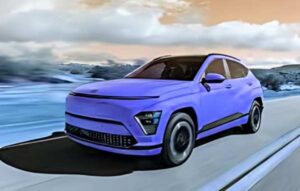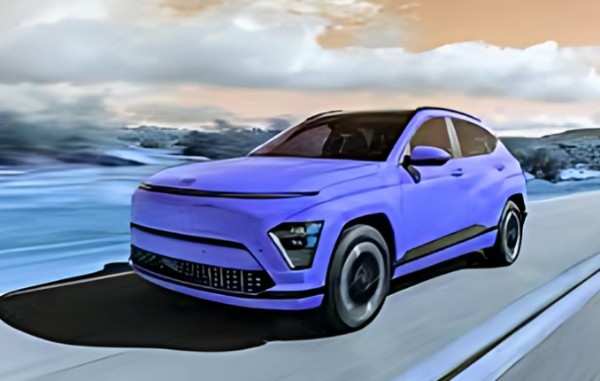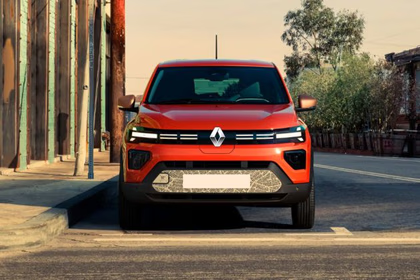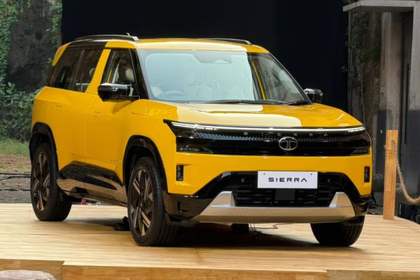Electric Vehicles, or EVs, are a viable option for India’s transportation problems. For a nation as populated as India, the concept of owning an electric vehicle becomes appealing. However, a significant issue remains: does this segment find electric vehicle affordable? The Indian middle class has the potential to become a prominent stakeholder in the electric vehicle market.
- The Marketplace for Electric Vehicles in India: What is New?
- Reduced Cost of Operation and Maintenance
- What Measures Should Be Put in Place To Make Electric Vehicle Affordable?
- Conclusion
- FAQs
- Regarding affordability, do electric vehicles qualify as affordable in India?
- By how much percentage does the operating expense of an electric vehicle differ from a petrol vehicle?
- Which initiatives has the government provided in regard to electric vehicles?
- In what ways do charging stations influence the cost range of electric cars?
- Are there electric vehicle loans available in India?
The premier fuel cost, along with the increasing environmental pollution, makes owning an electric vehicle a good idea, at least for the middle class. India’s Electric Vehicle Affordable market is undoubtedly growing at an accelerated rate because of government subsidies, changing technology, and shifting consumer preferences.
That said, middle-class families are often priced out due to the higher initial cost of EVs, which stems from technological improvements that have yet to be integrated into the Indian EV infrastructure. In the long run, the cost of owning an electric vehicle will go down, but only if the technology improves and production increases.
Additionally, the Indian middle class shows revolutionizing potential for the usage of electric vehicles, but only if the core issues like charging infrastructure, government EV incentives, and battery lifespan are constantly focused on and refined. EVs have the chance to become economical and easily accessible for Indian citizens once their immediate hurdles are dealt with.
The Marketplace for Electric Vehicles in India: What is New?
Traditionally, two-wheelers in India have primarily been consumed by middle-income families. With the increase in pollution in urban areas, the adoption of electric modes of transportation has become a lot more urgent. Businesses have the desire to contribute to sustainability but have been hindered by steep prices for electric vehicles.
Sadly, this is no longer the case as government support combined with the decreasing cost of batteries, as well as the increasing supply of electric vehicles, is changing the trend. Efforts are ongoing to further improve the accessibility of electric vehicles.
As owning electric two-wheelers becomes more Electric Vehicle Affordable, a larger segment of the population is able to own them, which helps to reduce pollution and makes urban areas more habitable. Electric vehicles are taking over, and they are doing so aggressively.
The Economics of Electric Vehicles The middle class in India is often burdened with high costs associated with electric vehicles (EVs), and understanding the costs behind EVs will help paint a full picture regarding this issue. The price of an electric vehicle is affected by many factors, but the biggest one is the battery.
In previous years, electric vehicle batteries accounted for about 30% to 40% of the total Electric Vehicle Affordable costs. Fortunately, these days, battery prices seem to be on a constant decline. For example, experts from Goldman Sachs suggest that battery prices will decrease by as much as fifty percent in the next three years.
As a result, Electric Vehicle Affordable will be easier to purchase, and in the long run, EVs could improve accessibility for the average consumer in India. This would result in more Electric Vehicle Affordable options for middle-class families in India looking to buy EVs, thus providing cleaner and more sustainable means of transportation. It will also become more common and accessible.

Find out the latest information on the cheapest Volks wagen EVs that are expected to be released in 2027. Click to learn more.
Government Initiatives to Boost Electric Vehicle Affordable The Indian government is well aware of how critical electric vehicles (EVs) are going to be in shaping the future of transportation, thus taking measures towards their easier adoption.
This is why they have started several programs to help improve the Electric Vehicle Affordable, such as the FAME II program, which stands for Faster Adoption and Manufacturing of Hybrid and Electric Vehicles. FAME II offers a handful of subsidies to electric vehicle consumers that are geared toward decreasing the price of EVs.
Many state governments have also joined in to support the transition to Electric Vehicles (EVs). They provide benefits such as waivers on registration fees and tax breaks to incentivize the purchase of electric vehicles through the state.
These efforts help to broaden the Electric Vehicle Affordable gap and make sure that EVs are adopted more widely. The use of multifaceted incentives ensures that Access to electric vehicles is improved at all levels, which goes a long way towards achieving lower carbon emissions objectives.
Reduced Cost of Operation and Maintenance
Apart from the purchase price, the savings to be gained from Electric Vehicle Affordable over time are staggering. The operating cost of EVs is considerably less than that of petrol vehicles. With electric vehicles having substantially fewer moving parts, the maintenance is much less, and the cost of running on electricity is considerably cheaper than petrol.
For example, operating a petrol scooter is anywhere between ₹1.6-2 per km electric vehicles can go down to operating expenses of only ₹0.12 to ₹0.16 per kilometer. Electric vehicles are excellent for India’s middle class, especially motorbike commuters, as they are cost-effective in the long run.
Financing and Accessibility
The increase in the adoption of Electric Vehicle Affordable India’s middle class is largely due to the availability of financing. Banks and other financial institutions offer a range of affordable electric vehicles loans at low interest rates and with easy repayment plans. These options greatly reduce the financial burden, making electric vehicles more feasible for a larger number of people.
In addition, the increased acceptance of EVs has given rise to more local manufacturers, which has further increased competition. When combined, these factors make Electric Vehicle Affordable to middle-class families.
Overcoming Range Anxiety
The most frequently heard concern among new electric vehicle owners is “range anxiety,” the nervousness surrounding the battery’s capability to hold a charge until a specific desired location is reached. This has indeed posed a major hurdle to EV adoption. Fortunately, Delhi and Bengaluru are taking the lead in establishing public charging stations across the cities. Through government-subsidized programs focused on expanding charging infrastructure, electric vehicles are easier to utilize on a daily basis.
As charging stations increase, electric vehicles will undoubtedly be able to circumvent this hurdle, allowing anxiety concerning range-limiting factors to no longer be an issue.
What Measures Should Be Put in Place To Make Electric Vehicle Affordable?
While decent progress has been achieved, some steps still need to be taken in order to make electric vehicle affordable for India’s middle class:
- Electric Vehicle Pricing: Feasible technologies need to be introduced to help decrease the price of electric vehicles. Price drops should be ensured alongside the advancement in battery technology.
- Charging Stations: To ensure electric vehicles can be used in day-to-day life, a wider variety of charging stations in accessible locations throughout the country need to be installed.
- EV Benefits Promotion: Most middle-class people do not realize the cost-effective value electric vehicles provide in the long run. Addressing this issue and educating people on the advantages of EVs, range issues, battery life, and EV myths helps broaden their usage.
Conclusion
There is no doubt that Electric Vehicle Affordable have extreme potential to succeed in India. Government policies, declining battery costs, and lower maintenance expenditure collectively boost the likelihood for middle-class people. But for EVs to become and remain mass marketable, further technological advances, improved public charging infrastructure, and promotion of EVs to the consumers must all be observed.
The middle class in India will be, and has always been, an integral part of adopting electric vehicles. Family spending for the middle-class Indian families makes sustained living difficult. However, with the right combination of policy, technology, and electric vehicles on the radar, it can become much easier, allowing millions of Indian families to sustain themselves.
As India heads towards cleaner and sustainable transportation, making electric vehicles easily accessible to the middle class makes it easier for them to adopt. To read more on the Electric Vehicle Affordable in India, click here.
Disclaimer: The trends, policies, and market conditions tend to change over time. Therefore, readers are advised to update themselves to make the most informed decision regarding the purchasability of electric vehicles in India, considering factors such as government incentives, market elements, and personal factors.
FAQs
-
Regarding affordability, do electric vehicles qualify as affordable in India?
With government subsidies, reduced battery prices, and lowered maintenance costs, electric vehicle adoption is becoming easier in India. With this trend in mind, the middle class in India wishing to adopt electric vehicles will become possible in the future.
-
By how much percentage does the operating expense of an electric vehicle differ from a petrol vehicle?
The operating expense of an electric vehicle as opposed to a petrol vehicle is significantly cheaper. For example, with electric scooters, a kilometer costs as low as rupees 0.12 to 0.16, while with petrol scooters, it can cost up to 1.6 to 2 rupees per kilometer.
-
Which initiatives has the government provided in regard to electric vehicles?
The ‘FAME – II’ scheme, alongside various state initiatives, grants vehicle subsidies and other financial incentives that help the consumer spend less, making it easier for them. This campaign hopes to assist consumers and help make Electric Vehicle Affordable.
-
In what ways do charging stations influence the cost range of electric cars?
It has been shown that the unavailability of charging stations has hampered the adoption of EVs. Yet, government investments in the charging infrastructure, particularly in places such as Delhi and Bengaluru, are capturing the essence of making EVs practical for daily commuting.
-
Are there electric vehicle loans available in India?
Numerous banks and financial institutions offer loans in India that are targeted toward electric vehicle purchases, which considerably assists middle-class families in purchasing their EVs. Such loans often have lower interest rates and more flexible repayment policies.





